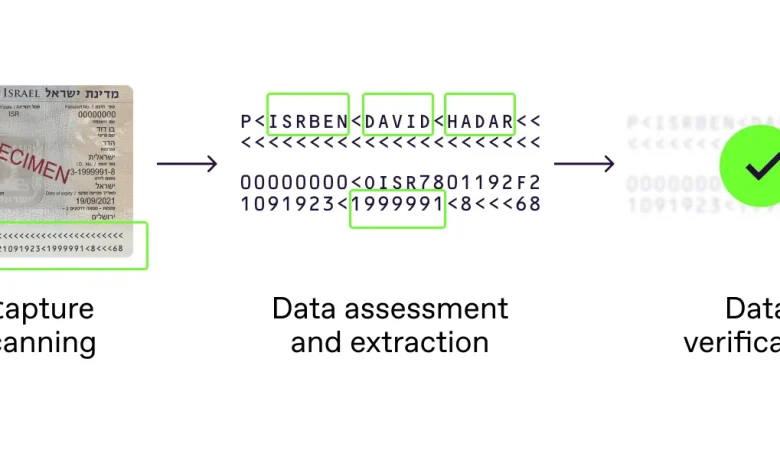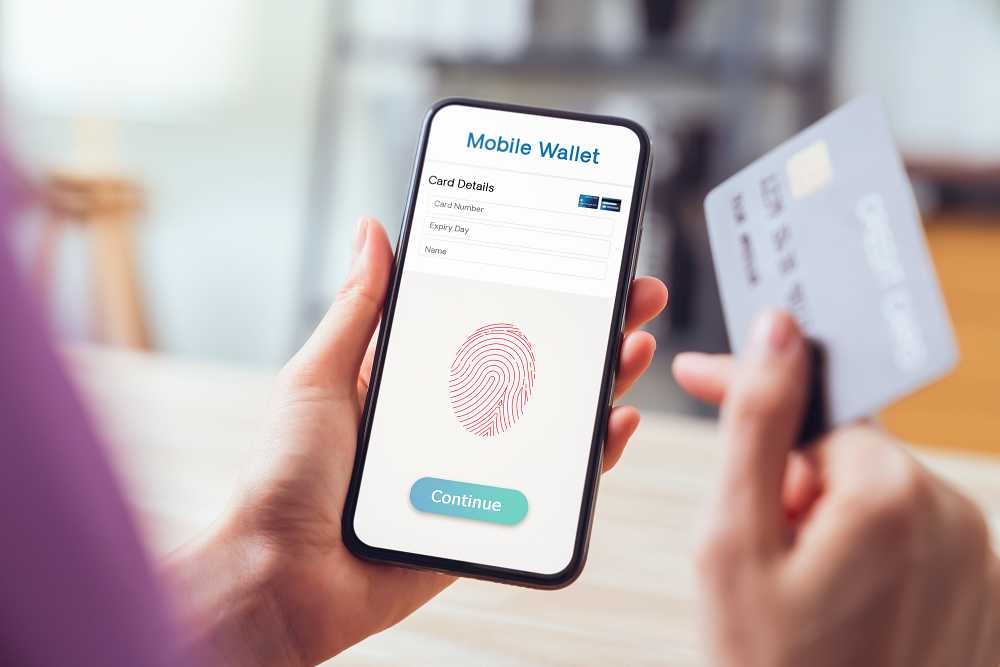
In the modern world of travel, finance, and digital onboarding, verifying identity quickly and accurately is essential. One of the key features that make this possible is the machine-readable zone (MRZ), a small but powerful section of ID documents that enables fast, standardized, and reliable data extraction. From airport border control to online verification, MRZ codes are the backbone of automated identity checks worldwide.
Let’s explore what the MRZ is, how it works, and why it plays such a vital role in identity verification.
What Is an MRZ?
The machine-readable zone (MRZ) is a standardized area found on passports, ID cards, and other travel or identity documents that contains essential personal data in a format that can be read automatically by machines. This zone usually appears as two or three lines of printed text made up of letters, numbers, and special symbols like “<”.
Each MRZ line follows international standards set by the International Civil Aviation Organization (ICAO), specifically ICAO Document 9303. This ensures consistency across countries, enabling global interoperability.
An MRZ typically encodes key information such as:
- Document type (e.g., passport, ID card)
- Issuing country
- Document number
- Name of the document holder
- Nationality
- Date of birth
- Gender
- Document expiry date
- Check digits for data integrity
Thanks to this structure, an MRZ allows systems to quickly and accurately capture all relevant identity details without relying on manual data entry. This not only speeds up the process but also minimizes human error during identity checks.
The Purpose of a Machine-Readable Zone
The primary purpose of the machine-readable zone is to make identity verification faster, safer, and more consistent. Before MRZ technology, immigration officers and security staff had to manually read and type document information, a process prone to mistakes and delays.
The MRZ simplifies this by enabling automated MRZ reading and data validation. When a document is scanned, specialized software extracts the encoded information, compares it with the visible (printed) data, and validates it using the built-in check digits.
In addition to efficiency, MRZ technology enhances security. The check digit system ensures that the data hasn’t been tampered with. Even a single incorrect character would break the checksum validation, flagging potential forgery or errors.
Today, MRZ verification is a fundamental part of identity verification systems in border control, financial onboarding, eKYC processes, and even digital identity applications. It’s a crucial step for preventing document fraud and maintaining trust in global travel and security systems.
Types of Machine-Readable Zones
Different types of identity documents use slightly different MRZ formats depending on their size and purpose. According to ICAO standards, there are three main types of MRZ layouts:
1. Type 1 (TD1)
- Found on ID cards and residence permits
- Comprises three lines of 30 characters each (total of 90 characters)
- Encodes document type, issuing country, document number, name, date of birth, and expiry date
2. Type 2 (TD2)
- Found on larger ID cards or some travel documents
- Contains two lines of 36 characters each
- Stores similar data to TD1 but provides slightly more space for document identifiers
3. Type 3 (TD3)
- Used in passports and travel documents
- Contains two lines of 44 characters each
- Includes all personal data, document details, and check digits for verification
Each MRZ format is designed to be consistent in length and content, which enables automated MRZ scanning regardless of the country or document type.
These standardized formats ensure that any certified MRZ reader from airport eGates to smartphone scanning apps can extract and verify data uniformly.
How Do Machines Read MRZ Codes?
The process of MRZ reading involves several precise steps that convert printed characters into digital data.
Step 1: Scanning
A camera or optical reader captures the MRZ lines from the identity document. This can be done using dedicated scanners at airports, document readers in banks, or even mobile phone cameras with specialized software.
Step 2: Optical Character Recognition (OCR)
The captured image is processed using optical character recognition (OCR) technology. The OCR engine identifies the alphanumeric characters in the MRZ and translates them into machine-readable text.
Step 3: Data Parsing
Next, the extracted text is parsed according to the ICAO MRZ format. Each segment of the MRZ corresponds to specific data fields like name, document number, or birth date.
Step 4: Check Digit Validation
Every key data field in the MRZ is followed by a check digit, a single character calculated using a mathematical algorithm. During MRZ verification, this digit ensures the integrity of the data. If even one character was altered or misread, the check digit test would fail, alerting the system to potential tampering.
Step 5: Cross-Validation
Finally, the extracted MRZ data is compared with the visible information on the document and, if applicable, with biometric data stored in an electronic chip. This multi-layer verification guarantees authenticity.
Advantages of MRZ Code in Identity Verification
The MRZ code offers several advantages that make it indispensable for modern identity verification systems.
1. Speed and Efficiency
With MRZ scanning, large volumes of passengers or customers can be processed quickly. Automated readers extract data in seconds, significantly reducing waiting times at borders, banks, and verification checkpoints.
2. Accuracy and Standardization
The machine-readable zone follows a globally standardized format, ensuring consistent results across different systems and countries. Whether the document comes from Japan or France, MRZ data fields remain uniform and reliable.
3. Fraud Prevention
Thanks to check digits and standardized formatting, MRZ verification immediately detects inconsistencies or tampering. Combined with biometric matching, this ensures a high level of protection against counterfeit or altered documents.
4. Compatibility with Digital Systems
MRZ reading is easily integrated into digital workflows, making it ideal for remote onboarding and eKYC. When combined with document authentication and liveness detection, it helps organizations build secure, automated identity verification pipelines.
5. Reduced Human Error
Manual data entry often leads to typos or mismatched records. Automated MRZ verification eliminates this issue, ensuring that the extracted information is accurate and consistent.
What Is a Machine Readable Passport?
A machine readable passport (MRP) is a travel document that includes a machine-readable zone on the identity page. This MRZ allows border control systems to scan and verify passenger information rapidly and securely.
A machine readable passport follows ICAO’s TD3 format, meaning it has two lines of 44 characters each at the bottom of the passport page. These lines contain all the critical information about the passport holder, including their name, nationality, and passport number, encoded for fast machine processing.
At border control, an officer or eGate system uses MRZ scanning to extract this data. Then, it cross-references it with the document’s visual information and the digital data stored in the biometric chip (if available).
What’s the Difference Between a Biometric and Machine Readable Passport?
While both passport types can be read automatically, there’s a crucial difference between them:
- Machine readable passport (MRP): Contains only the printed MRZ lines. It can be read by optical scanners but doesn’t store biometric data.
- Biometric passport (ePassport): Includes an electronic chip in addition to the MRZ. This chip stores biometric identifiers like fingerprints, facial images, or iris patterns for enhanced verification.
Essentially, every biometric passport is also machine readable, but not every machine readable passport is biometric.
Biometric passports offer an extra layer of protection since they combine MRZ-based verification with biometric matching, making it nearly impossible to forge or alter a document without detection.
 Why MRZ Matters for Digital Identity Verification
Why MRZ Matters for Digital Identity Verification
Beyond physical border checks, the MRZ has become a cornerstone of digital identity verification. Modern systems use MRZ scanning to automate ID capture during remote onboarding processes, such as opening a bank account or registering on a government portal.
When a user uploads a photo of their passport or ID card, MRZ readers instantly extract and validate the embedded data. Combined with facial recognition and document forensics, this forms a robust identity verification pipeline that balances speed, accuracy, and security.
For instance, Regula’s MRZ verification technology helps companies detect tampering, confirm document authenticity, and ensure that the MRZ data matches the visible and biometric information. This process is critical for compliance with KYC, AML, and travel security standards.
Conclusion
The machine-readable zone might look like a simple block of text at the bottom of your passport, but it’s one of the most important security and efficiency features in modern identity systems. The MRZ code ensures that identity documents can be processed quickly, consistently, and securely whether at an airport, a bank, or an online platform.
From machine readable passports to national ID cards, MRZ technology plays a central role in global identity management. Its standardized structure, coupled with MRZ reading and MRZ verification solutions, helps governments and businesses prevent fraud, enhance customer experience, and protect digital identities.
In an increasingly digital world, the MRZ remains a powerful link between physical documents and digital authentication systems ensuring trust, accuracy, and security across every identity checkpoint.

 Why MRZ Matters for Digital Identity Verification
Why MRZ Matters for Digital Identity Verification


